International
The figure of Alan García is blurred in Peruvian politics five years after his death
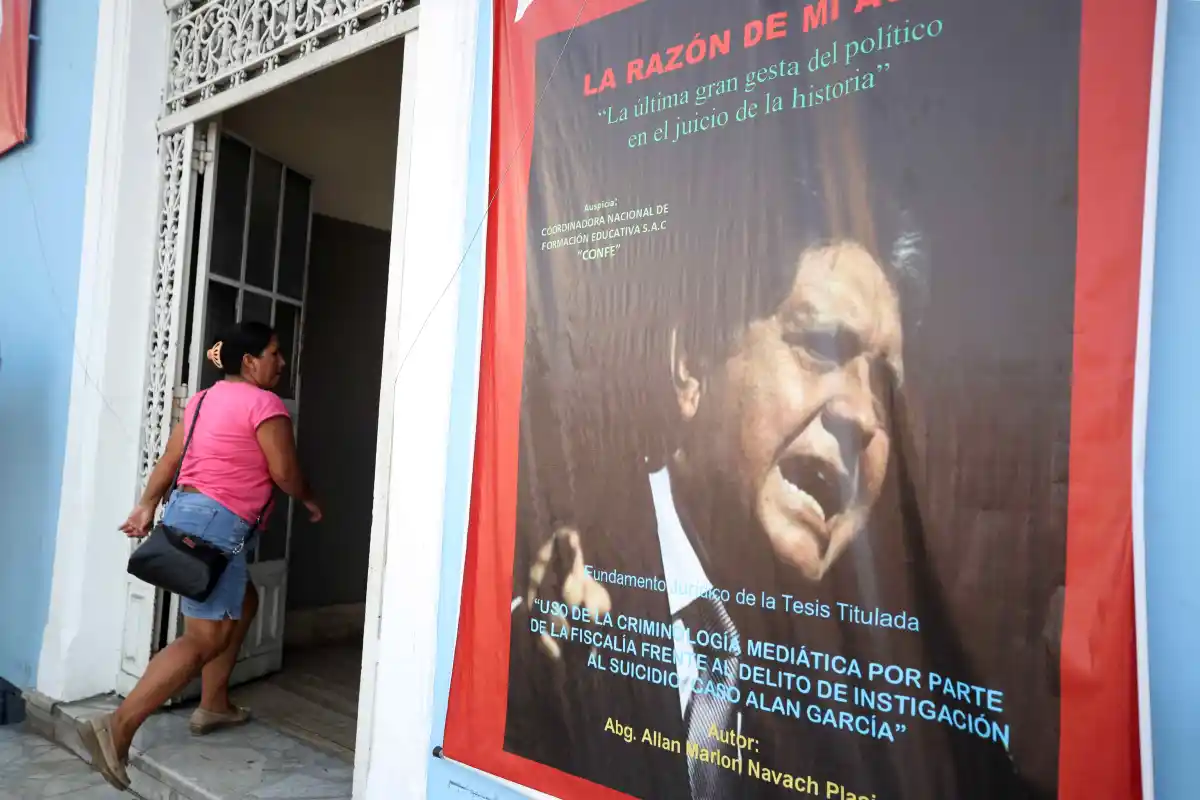
Five years after his death, the figure of the powerful president Alan García (1949-2019) has been blurred without the appearance of a visible heir of his political legacy, or of his leadership in the historic Peruvian Aprista Party (PAP), which even lost its registration in the electoral register for two years.
García committed suicide on April 17, 2019 when he was going to be arrested for his alleged links to the Odebrecht case, although his closest collaborators have insisted during these years that he was the victim of a “criminal conspiracy.”
The controversy about his death was briefly revived last March, when several of his followers, including former Prime Minister Jorge del Castillo, complained about the decision of the Judiciary to authorize the Prosecutor’s Office to check two cell phones that were seized in his home.
Although that decision prohibited the Public Ministry from extracting or recovering information outside the process for the ‘Lava Jato’ case in Peru, Del Castillo assured that it was “outlaw,” since the investigation against the former president “ended with his death.”
Alan García was 69 years old when he committed suicide to prevent a group of police and prosecutors who arrived at his house from preliminarily detaing him for his alleged connection with the Odebrecht case, which he always denied.
He was made a farewell with massive funerals held at La Casa del Pueblo, the historic place of the PAP located in the center of Lima, and his remains were cremated on April 19, 2019.
From the beginning, his death generated controversies and clashes between followers and detractors, which have not been attenuated over time and even led a couple of years ago politicians such as the ultra-conservative Rafael López Aliaga, who has been mayor of Lima since 2023, to affirm that they would request that she be investigated.
In May of that year, former President Pedro Pablo Kuczynski, who is also being prosecuted for alleged corruption crimes related to the Odebrecht case, directly accused the Prosecutor’s Office of having “led to death” Alan García.
His closest followers have always pointed out that “he was the victim of a criminal conspiracy,” which they linked to incidents prior to his death, such as his entry into the Uruguayan embassy, whose Government refused in December 2018 to grant him the asylum he requested with the argument that he was a “political persecuted.”
Shortly before, Odebrecht executives assured that they had given him four million dollars during his second government, which he reached despite the fact that the shadow of corruption already haunted him from his first administration, from 1985 to 1990, when his administration left his country immersed in an unprecedented economic crisis.
Beyond that, and despite the fact that Alan García maintained a very active presence in Peruvian politics, his memory is decreasing both in local media, which in life they dedicated great coverage to him, and in the political space, something that has been consolidated by the absence of representatives of the PAP in Congress.
Although his supporters defend that his legacy cannot be erased, shortly after his death the leaders of his group engaged in internal disputes that generated a crisis that led to his retirement from the 2021 general elections.
Faced with that situation, in September of that year the National Election Jury (JNE) confirmed that the PAP, which was founded in 1930 by Víctor Raúl Haya de la Torre, had lost its official registration.
Finally, after numerous procedures and challenges, the party managed in March 2023 to confirm that it had been re-registered in the Registry of Political Organizations (ROP) of the JNE, so it will be able, in principle, to participate again in the elections to be held in Peru in 2026.
Central America
Senator Van Hollen Meets with Deported MS-13 Member in El Salvador; Trump and Bukele React

U.S. Democratic Senator Chris Van Hollen, representing the state of Maryland, held a meeting in El Salvador with deported MS-13 gang member Kilmar Ábrego García, a member of the criminal group classified by the U.S. government as a terrorist organization.
“Kilmar Ábrego García, miraculously resurrected from the ‘extermination camps’ and ‘torture chambers,’ now sipping margaritas with Senator Van Hollen in the tropical paradise of El Salvador!” wrote President Nayib Bukeleon X (formerly Twitter), sharing photos of Van Hollen, Ábrego García, and a lawyer sitting together at a Salvadoran hotel.
The deported gang member is seen wearing a plaid shirt and a flat-brimmed cap, seated at a table with glasses and coffee cups. The senator also shared images of the meeting on his own social media accounts.
Bukele reaffirmed that Ábrego will remain in El Salvador and will not be returned to the United States.
“Now that his health has been confirmed, he has earned the honor of remaining under the custody of El Salvador,” Bukele added.
Former U.S. President Donald Trump criticized the senator’s meeting with Ábrego on Truth Social, calling Van Hollen “a fool” for advocating for Ábrego’s return to the U.S.
International
Pope Francis Appears for Easter Blessing, Calls for Peace and Religious Freedom

Pope Francis, still recovering from pneumonia, appeared on the balcony of St. Peter’s Basilica in the Vatican on Easter Sunday and, with a faint voice, wished a “Happy Easter” to the thousands of faithful gathered to celebrate the Resurrection of Christ.
A month after being discharged from a lengthy hospital stay, the presence of the 88-year-old pontiff had remained uncertain, with the Vatican not confirming his attendance ahead of time.
Eventually, the pope made a brief appearance in a wheelchair shortly after 12:00 p.m. (10:00 GMT) to deliver his traditional “Urbi et Orbi” blessing (“to the city and to the world”).
Although no longer wearing an oxygen cannula, the Argentine Jesuit relied on a close aide to read his Easter message, which touched on major global conflicts.
Francis condemned the “dramatic and unworthy humanitarian crisis” in Gaza and called for a ceasefire, while also expressing concern over the “growing climate of antisemitism spreading across the globe.”
He further emphasized the importance of religious freedom and freedom of thought, stating that without mutual respect, “peace is not possible.”
International
Thousands rally nationwide against Trump’s threat to U.S. democracy
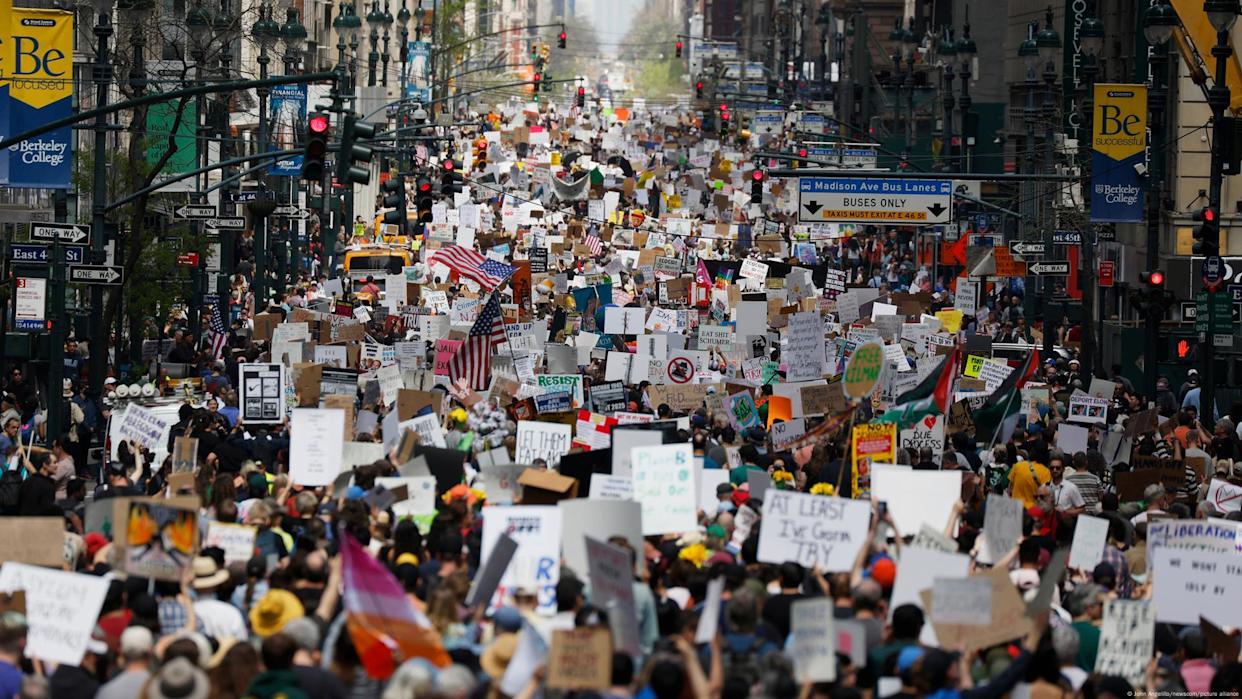
Thousands of protesters gathered on Saturday (April 19, 2025) in major cities like New York and Washington, as well as in small communities across the United States, in a second wave of demonstrations against President Donald Trump. The crowds denounced what they view as growing threats to the country’s democratic ideals.
In New York City, demonstrators of all ages rallied in front of the Public Library near Trump Tower, holding signs accusing the president of undermining democratic institutions and judicial independence.
Many protesters also criticized Trump’s hardline immigration policies, including mass deportations and raids targeting undocumented migrants.
“Democracy is in grave danger,” said Kathy Valyi, 73, the daughter of Holocaust survivors. She told AFP that the stories her parents shared about Adolf Hitler’s rise to power in 1930s Germany “are happening here now.”
In Washington, demonstrators voiced concern over what they see as Trump’s disregard for long-standing constitutional norms, such as the right to due process.
-

 International4 days ago
International4 days agoArsenal stun Real Madrid at the Bernabéu to reach Champions League semifinals
-
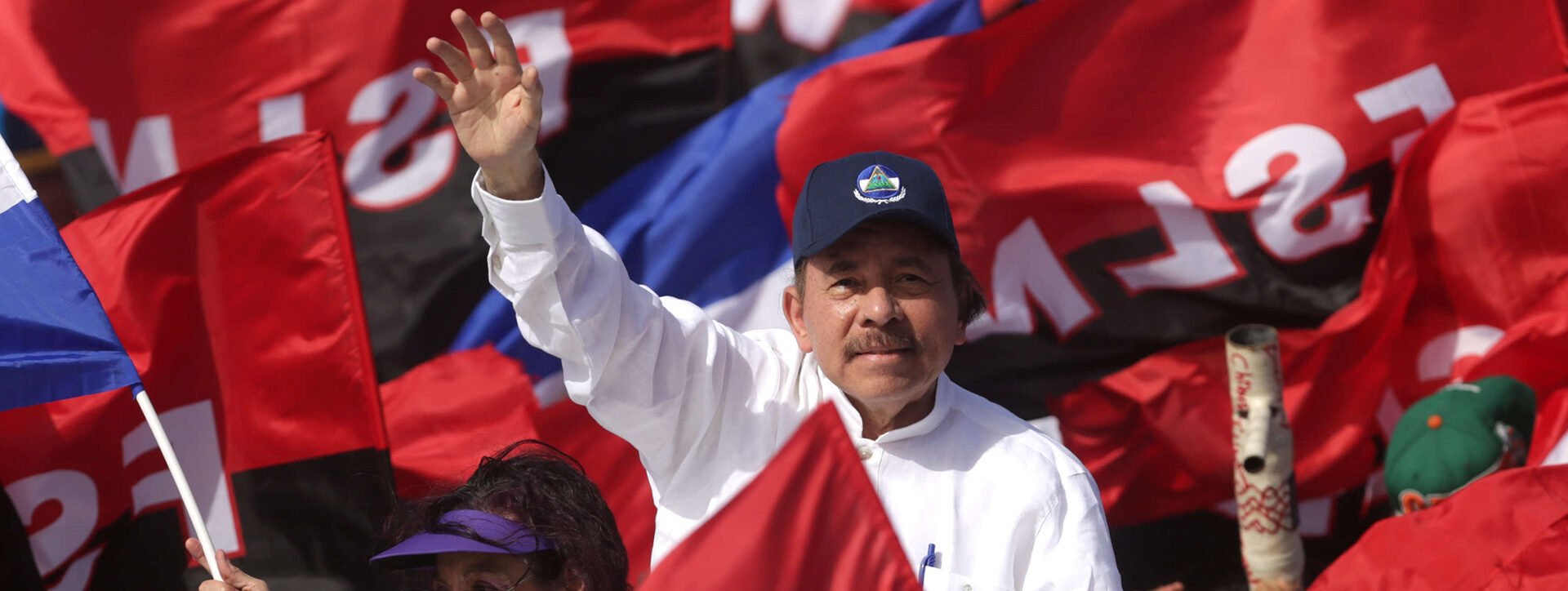
 Central America3 days ago
Central America3 days agoNicaraguan Exiles to Mark 7th Anniversary of 2018 Protests with Global Commemorations
-
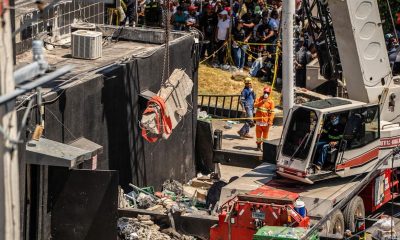
 International3 days ago
International3 days agoDominican ‘False Hero’ Arrested for Faking Role in Nightclub Collapse That Killed 231
-

 International2 days ago
International2 days agoACLU seeks emergency court order to stop venezuelan deportations under Wartime Law
-

 International4 days ago
International4 days agoBogotá residents line up for yellow fever vaccine amid national alert
-

 International4 days ago
International4 days agoDeSantis’ immigration crackdown sparks alarm in Venezuelan Communities in Doral
-

 Central America2 days ago
Central America2 days agoUN complaint filed against Costa Rica over detention of migrant children
-
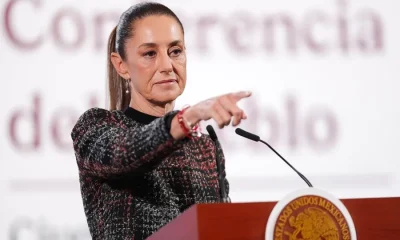
 International4 days ago
International4 days agoMexico refuses to restore ties with Ecuador while Noboa remains in office
-
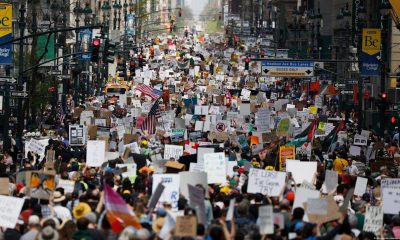
 International22 hours ago
International22 hours agoThousands rally nationwide against Trump’s threat to U.S. democracy
-
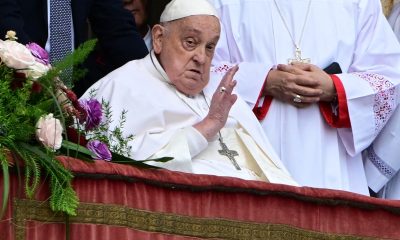
 International4 hours ago
International4 hours agoPope Francis Appears for Easter Blessing, Calls for Peace and Religious Freedom
-

 Central America4 hours ago
Central America4 hours agoSenator Van Hollen Meets with Deported MS-13 Member in El Salvador; Trump and Bukele React















